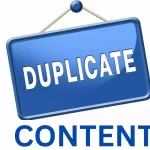Blog Publishing Plan: Are you worth having a working blog that people will read? Then you have to write about topics that are searched for and the texts properly optimized, and then compile a publication plan for your blog from them. How to do it?
The creation of a functional publication plan cannot be done without keyword analysis and other tools such as Google Analytics, Search Console, or Ahrefs.
At first glance, the whole process may seem like rocket science. Honestly, science is a lot of the time. Our plans have come a long way, and it took a lot of work to fine-tune them to their current form. However, we will save it for you and share a step-by-step guide.
First of all, let’s clarify what a publication plan is.
what a publication plan
The publication plan is not an editorial plan
The publication plan is a sophisticated document containing a list of topics or articles to be published, keywords, the most suitable month for publication, and potential searches for particular topics.
In addition, it should ideally contain the recommended category into which the topic falls or the type of content, i.e., whether it is a classic article, an in-depth article, a guide, or perhaps an infographic.
And it is safe to include various platforms where the content can be used – for example, a blog, social networks, or YouTube.
In short, a publishing plan is something no successful blog can do without. It is the key figure behind all of our clients’ blogs, ensuring that they are successful and generating organic traffic.
A plan is especially important when a blog is getting off the ground, and it is necessary to get it noticed by search engines and users. For established blogs, the publication plan often includes articles to be revised or republished.
The editorial plan, on the other hand, serves internal needs and can be imagined as a table in which specific things related to the text creation process are listed, i.e., the author of the text, date of publication, H1 headings, metadata, or, for example, information on the status of finds the text (whether it is being written, waiting for review, is it published on the web).
Its appearance is then up to everyone, but it should always correspond to the needs of the copywriter, who should find everything essential for writing an article.
Immerse yourself in the field
So now we know what a publication plan is. But before you start writing down the topics that come to mind, you need to dive into the data. This is the only way you will get an idea of what is being sought in connection with the given field, what content is created by the competition, and what you can use from it.
Blog about travel vs air conditioners
Let’s say you have a client from the insurance industry who offers travel insurance, among other things. Its scope provides you with quite generous space and a relatively wide range of topics because the content section can also include tips for travelers, for example, what to visit in a given country, and the selection of topics is thus a little easier in this case.
However, if you are starting a client’s blog that deals with selling and installing air conditioners, the scope for choosing topics narrows considerably.
In this case (but not only), it is also important to get a picture of the field in which the client operates to find out what you can write about.
How to collect data for creating a publication plan
And to gain awareness of a given industry, you need data, usually keywords. Keyword analysis or, for example, a content gap analysis will reveal them.
In addition, you have to look at the competition. And not only the direct one but also the content one. You can easily find out who your SEO or content competitor is in the Ahrefs tool in the Competing Domains tab.
When you analyze the competitor’s pages, focus on what they write about, how they write, and perhaps also what form they chose for their content or word coverage in organic search.
But let’s take it in order. Where to start?
1. Keyword analysis
Keyword analysis can be provided to you by an SEO specialist if you work with them, or you can do it yourself.
However, for the needs of the publication plan, it does not have to be as complex as classic keyword analysis. It is mainly a matter of having a ready dataset of words and phrases related to the given field or segment and their searches.
A keyword analysis is primarily used for SEO purposes, but every copywriter should know and use it, especially when compiling a publication plan.
Keyword analysis in a nutshell
The keyword is the basic building block of every website. Without it, you cannot do search engine optimization.
This is because it gives you a comprehensive idea of which keywords and phrases are relevant to the site and tells you which words and phrases to focus on, on the site. Please read our full guide on The 27 free keyword analysis tool.
The output is a list of keywords that are the most searched for, relevant, and, ideally, the least competitive.
From the point of view of the content, i.e., the creation of the publication plan, the keywords from the keyword analysis will show you the direction and rough approach of the individual topics.
However, don’t just focus on high-search keywords. Consider long-tail phrases as well, which don’t have groundbreaking search results but are much more specific, less competitive, and increase the chance that search engines will notice your content.
For example, with the phrase how to optimize the website for search engines, you have a better chance of being placed in the first position in the search engine than in the case of a more general phrase, such as SEO optimization, which, although it is highly searched, but also highly competitive, and thus appear on it is very difficult in the search engines because others have already occupied the leading positions.
Tip: In the keyword analysis, it is also necessary to distinguish between phrases that will be covered on the site itself – typically. For example, the keyword travel insurance and phrases that are more suitable for a blog.
In this case. It can be, for example, phrases like how to get travel insurance, how to choose travel insurance, etc.
2. Content gap analysis
A content gap analysis helps you find out how your content compares to your competition. It will show you the keywords that the competition is showing for, but you are not.
This gives you the opportunity to cover various phrases and words that may not even appear in keyword analysis.
Doing a high-quality content gap analysis takes a lot of time. Since it is a good idea to include at least five competitors in the analysis, the resulting volume of words can grow to unprecedented proportions.
So you spend hours and hours cleaning the dataset and then more than choosing relevant keywords. For larger websites or fields with a wide scope, such as travel, insurance, or finance, the process can easily take more than 10 hours.
Competitive Analysis at Ahrefs
In the case of smaller publication plans up to around 50 topics, you will probably appreciate the Ahrefs marketing tool, which will help you define your biggest content competitors and will process the content as mentioned earlier gap analysis for you in a few clicks.
The output will not be as comprehensive as in the case of the honest analysis described above, but you will save time that you would otherwise spend going through tens of thousands of keywords.
TIP: Always make sure you have the correct country selected when working with Ahrefs. You can then reduce the large volume of keywords by filtering out the competitor’s brand terms and possibly selecting only those that, for example, have a search volume greater than 500 or are only displayed in positions 1-10, which corresponds to the first page in the search engine.
3. Competitive analysis
Mapping the competition is one of the most important steps even before the content creation itself – you will get an overview of the topics your competitors write about and that you could also write about, but better. Among other things, you will find out how it is doing in terms of visibility in organic search (i.e., coverage keywords).
Finding your rivals is the first step in a competitive analysis. Attention is not always a direct competitor, even in terms of content or SEO competitor.
The already mentioned Ahrefs will help you identify competitors within the content via the Competing Domains tab and Marketing Miner (you will need a keyword analysis, the dataset of which you will then insert into the keyword report and select the Link Prospecting miner).
Competitors selection in Ahrefs.
Also, follow various industry blogs and magazines, search results for a selected query, and suggestions from search engines and whisperers.
Enter the search phrase of your choice and see who appears on the first page of the search (sometimes you have to go deeper and look at other pages as well) and select relevant competition accordingly.
Once you have an overview of your competitors, research them in detail – what content they create, how often they publish articles, what categories and tags they use, and last but not least, what the articles themselves look like:
- whether they are visually attractive and legible,
- what is their range
- how they are optimized
- What is their tone of voice etc.?
You can also find out how the competition and its articles are doing in Ahrefs in the Top Pages tab. You can immediately see in which position and with which keyword it is seen in the search, which other keywords appear in the article, and how much traffic the article brings.
Then compare the information obtained with your website and look for what you could improve, whether it would be possible, for example, to expand the blog to include lifestyle topics, add categories for better orientation, improve the graphics of the articles, etc.
Creating a publication plan step by step
After a detailed analysis of the given segment and your content competitors, the creation of the publication plan itself comes next. It should be noted that you do not need to go in-depth in all analyses. It is important to gain insight into the relevant field and be clear about where you want to go.
How to do it:
1. Review your keywords and competition
First, look at the data obtained, i.e., keyword analysis, content gap analysis, and competitor analysis. After that, you will have an idea of what content you can include in the plan, and you will choose at least the basic areas of topics.
2. Create a mind map and try brainstorming
Brainstorming is a perfect method to save time because more heads know more, and together with other copywriters and content specialists, you can come up with much more.
Moreover, in a relaxed atmosphere, you will be better able to think “out of the box” and develop interesting and novel ideas.
If the colleagues or specialists you work with are not readily available, try creating a simple mind map. Draw individual areas of topics in it and attribute a more specific form of individual articles to them.
At that moment, you can let your imagination run wild and write down everything that comes to mind. You will edit it later in the creation process.
3. Start creating a publication plan
Once you’ve organized your data and all your ideas, you should have the following:
- thematic areas,
- specific topics of articles,
- suitable keywords for individual topics,
- suggestions of relevant categories,
- publication date proposals.
Next, start writing down the individual topics in the publication plan and immediately assign keywords to them for which you will optimize the articles (ideally at least 3, but there can be more).
Remember that you are still based on the data you have collected (through keyword research, possibly content gap analysis, etc.), so take individual main keywords from these sources, but you can also look at other keyword suggestions in Marketing Miner and supplement the main keywords with secondary keywords that help you specify the article.
Complete the publication plan with the publication date, category, or type of content
Include columns in the plan that will include:
- topic,
- Keywords,
- proposed publication date,
- the category to which the topic falls,
- searchability of particular topics.
You can then optionally add additional columns as needed, for example:
- content type,
- text range,
- text structure,
- comment,
- inspiration etc.
A basic publication plan might look like this, for example.
We have also prepared a basic publication plan template for you – in order to use it. You need to make a copy and save it to your disk. Sign up for our newsletter to have access to it.
How to determine the publication date of articles?
From the keywords assigned to the given topic, choose the main keyword (usually, the keyword with the highest searches) and look up its monthly searches – you can easily do this using the Marketing Miner tool or the Ahrefs tool and checking the keyword report.
In this way, you will find out in which months the keyword is most searched for and then adjust the publication date accordingly.
But it will not always be sufficiently telling and corresponding to reality, and therefore it is also necessary to take into account the seasonality of the given topic.
For example, you won’t publish Christmas-themed articles in December, even if your main keyword is the most searched for that month.
TIP: When determining the publication date, keep in mind that it takes time for robots to index an article and, in layperson’s terms, notice it. Therefore, it should be published in advance a month (or more).
Recycle already published articles
You can also include revisions of already published articles in the plan. It is advisable to edit articles containing important information that often changes or will change.
In Google Analytics, look at the most searched articles and think whether you can still use them in some way. Perhaps you will find that the previously mentioned information needs to be updated.
Conclusion
Creating a quality publication plan takes time. And in order for it to be of good quality and bring you regular organic traffic, you need to choose topics based on data. There are no limits to creativity, but you cannot avoid analysis in this case.
Always create a publication plan based on data obtained from:
- keyword analysis,
- content gap analysis,
- competitor analysis.
Having at least a basic understanding of your client’s industry is key. This is exactly what the analyses, as mentioned earlier, are for, which will help you get a picture of the industry or segment in question but also of the topics that you can cover on the blog.
The resulting topic suggestions should be based on all the collected data and keywords. Especially thanks to them you will know what to write.
Keyword analysis and content gap analysis are used to select keywords for particular topics, and other keywords can be used. You can search, for example, in Marketing Miner, Ahrefs, or through other keyword search tools.
Thanks to the analysis of the competition, you will know, among other things, what and how the competition is doing and what you can do better or differently.
For competitive content, focus on the type of articles and the visual aspect, and also look at the visibility of the competitor in organic search.
Then compile specific topics based on all the data obtained. Always assign at least three keywords to them. Don’t be afraid of long-tail phrases – they are less searched for but more specific and less competitive, so you have a better chance of appearing in the top search positions with them.
Finally, add categories, publication dates, and other details to the topics and keywords in the publication plan.
A publication plan is the basis of a well-functioning and well-read blog. By knowing what people are looking for,
You can create articles that interest them and drive organic traffic to your blog.





